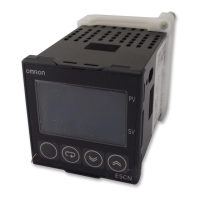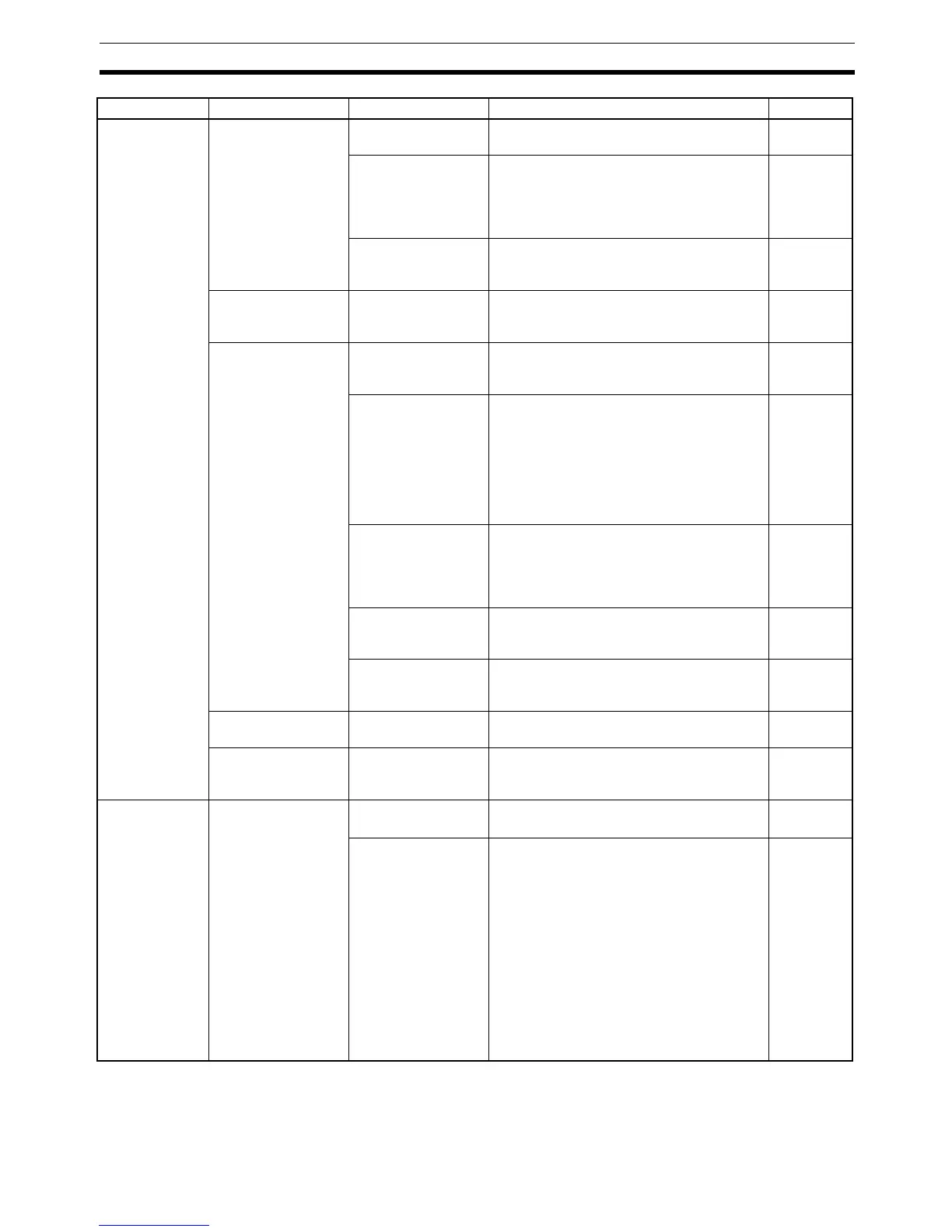263
Appendix
Note The tightening torque for E5CN-U is 0.5 N·m.
During opera-
tion (continued)
Output will not turn
ON
Set to STOP
(default: RUN)
Set the RUN/STOP mode to RUN. If STOP
is lit on the display, control is stopped.
156
Specified operation
is unsuitable for
required control
(default: Reverse
operation)
Select either forward or reverse operation
depending on the required control. Reverse
operation is used for heating operations.
42
A high hysteresis is
set for ON/OFF oper-
ation (default: 1.0°C)
Set a suitable value for the hysteresis. 48
Temperature Con-
troller will not oper-
ate
Set to STOP
(default: RUN)
Set the RUN/STOP mode to RUN. If STOP
is lit on the display, control is stopped.
156
Temperature error is
large
Input error (S.err dis-
play)
Thermometer has
burnt out or short-cir-
cuited.
Check whether the thermometer has burnt
out or short-circuited
---
Thermometer lead
wires and power
lines are in the same
conduit, causing
noise from the power
lines (generally, dis-
play values will be
unstable).
Wire the lead wires and power lines in sep-
arate conduits, or wiring using a more direct
path.
---
Connection between
the Temperature
Controller and ther-
mocouple is using
copper wires.
Connect the thermocouple’s lead wires
directly, or connect a compensating conduc-
tor suitable for the thermocouple.
---
Installation location
of thermometer is
unsuitable.
Check whether the location of the thermom-
eter is suitable.
---
Input shift is not set
correctly (default:
0°C)
Set a suitable input shift. If input shift is not
required, set the input shift value to 3.
77
Keys will not operate Setting change pro-
tect is ON.
Turn OFF setting change protect. 96
Cannot shift levels Operations limited
due to protection.
Set the operation/adjustment protect, initial
setting/communications protect, and set-
ting change protect values as required.
96
After long ser-
vice life
Control is unstable Terminal screws may
be loose.
Retighten terminal screws to a torque of
0.74 to 0.90 N
·m (see note).
26
The internal compo-
nents have reached
the end of their ser-
vice life.
The Temperature Controller’s internal elec-
trolytic capacitor depends on the ambient
temperature, and load rate. The structural
life depends on the ambient environment
(shock, vibration). The life expectancy of the
output relays varies greatly with the switch-
ing capacity and other switching conditions.
Always use the output relays within their
rated load and electrical life expectancy. If
an output relay is used beyond its life
expectancy, its contacts may become
welded or burned. Replace the Temperature
Controller and all other Temperature Con-
trollers purchased in the same time period.
---
Timing Status Meaning Countermeasures Page

